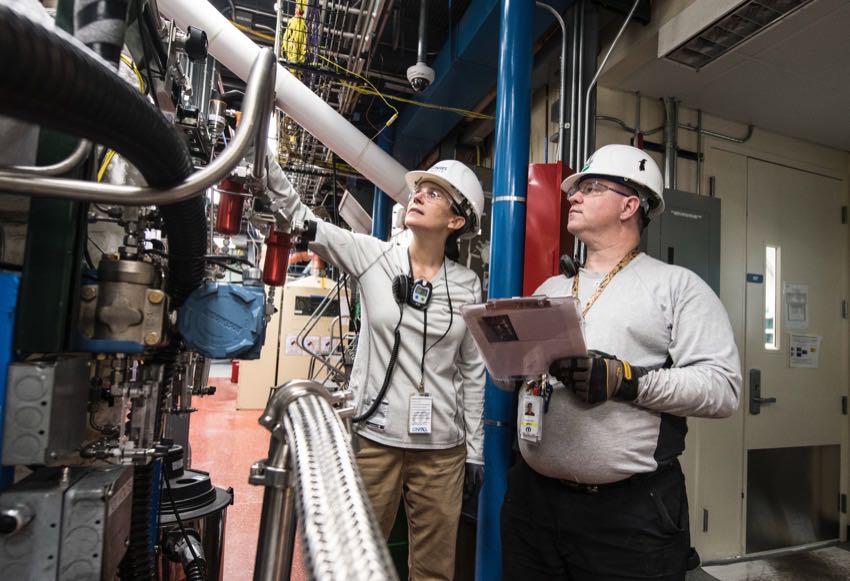We’ve covered keeping OSHA away from your job site, but inspectors keep stepping up site visits and compliance efforts. This month, I want to run through some interesting tips I picked up from an OSHA compliance seminar, on what to do if OSHA shows up on your job site. Of course, this also covers what not to do.
Fall protection is the number one area that OSHA has identified as an area of concern. That’s worth mentioning again because if you’re not in compliance with fall protection rules, that’s probably what’s going to put the biggest target on your back in terms of the likelihood of being inspected. More importantly, it’s statistically putting your workers at the greatest risk.
To help understand the OSHA mindset, consider this quote from Dr. David Michaels, Assistant Secretary of Labor for OSHA: “We cannot tolerate workers getting killed in residential construction when effective means are readily available to prevent those deaths.”
Note the mention of “residential construction”, where previously much of the emphasis concerned larger commercial jobs. Secondly, he mentions the fact that safety equipment is “readily available.”. You can take that to mean that you don’t really have any excuse for not having it and using it!
What to Do if an OSHA Compliance Officer Shows Up
If a compliance officer shows up on your job site, the seminar instructed us not to treat it as a random fishing expedition. The officer will already have had the site under observation and will have noted some type of violation that makes a site visit necessary.
The inspection begins as soon as the officer arrives on the site and identifies himself (or herself—there are a number of female OSHA compliance officers as well). As soon as that happens, stop all work immediately! This applies to your own crews and your subcontractors as well. If you’re not on-site when the officer arrives, make sure your crew knows to call you or your foreman immediately.
Ask (Politely) to See ID
Ask to see identification, which should include a US Department of Labor identification card with a photo and a serial number. Because scammers exist, the seminar recommended you call OSHA to verify the officer’s identity.
Knowing what to do if OSHA shows up means knowing how to address and handle compliance officers. The compliance officer will begin by explaining why they selected your site for an inspection. They’ll tell you what the purpose of the visit is, what the scope of the inspection will be, and what OSHA standards they’ll be using. If you had a specific complaint filed against you, they’ll distribute copies of the complaint.
As the inspection itself begins, follow the inspector around. As I mentioned, he/she will already have photos, notes, and other documentation of the violations. There’s no point in lying or trying to evade anything.
Stay Cooperative
You’re also not going to gain anything by being nasty, sarcastic, or argumentative. Instead, try and adopt a cooperative attitude. Obviously no one likes having an OSHA inspector on-site. Having lived through an OSHA inspection myself, I’ll be honest in saying that some of what they look for seems overly picky in what is, undeniably, an inherently dangerous occupation. But the ultimate goal for everyone here is a safe workplace. Be as accommodating as possible, and you’ll make the process less painful.
How long the site inspection lasts is pretty much dictated by the inspector. He may consult with employees, take additional photos or instrument readings, and examine pertinent records. As you go along, the inspector will point out unsafe conditions. If you ask, he’ll explain what you should do to correct the situation.
Fix Violations Immediately
Wherever possible, try and fix the violation immediately. Here’s a common example: The inspector points out a stepladder that’s folded up, not in use. However, it’s leaning vertically against a wall, so someone could use it unsafely in that position. This violation could result in a citation and a fine. Rather than grumble about how picky he’s being, immediately grab the stepladder and lay it down horizontally on its side. Then make a note of it, and tell him that you’ll make that a topic at your next safety meeting. This not only shows cooperation, but it also removes the potential hazard and may also keep you from being cited.
When the Inspection’s Done
Knowing what to do if OSHA shows up gets you prepared for the on-site portion of the visit. The final part involves a closing conference. Here you discuss the problems the officer found. You also get a chance to ask questions. He’ll also tell you what citations he’s recommending and the time frames you’ll have for fixing the noted problems. However, the compliance officer is not the one to actually issue the citations or assess the fines. That will come from the Area Director.
We were told that there are a lot of factors affecting the amount of any fines. That includes the nature of the violation, your history of violations, good faith, and the size of the business. If you want to reduce the amount of the fines, we were told that it’s very important that you contest the fines within 15 days of receiving your official paperwork in the mail.



